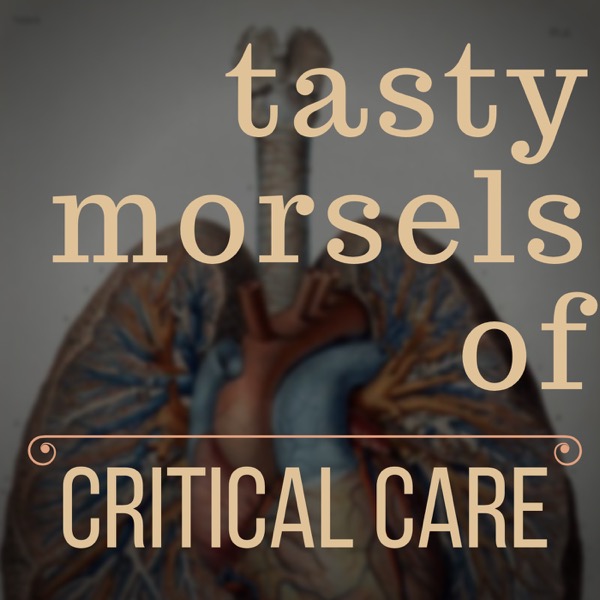Tasty Morsels of Critical Care 065 | Cerebral Protection
Tasty Morsels of Critical Care - A podcast by Andy Neill - Mondays

Welcome back to the tasty morsels of critical care podcast. This time we look at Oh Chapter 52, focused on cerebral protection. There is, I must admit some repetition and cross over here, particularly with tasty morsels 20 and 39 respectively which cover more with regards to TBI. But in all honesty a little repetition is often very helpful for such subjects. We talk a lot about cerebral protective measures in the ICU and hopefully this will give you a little of the basic physiological background. We’ll start with a few basic factoids. The brain apparently receives 15% of the cardiac output, though I imagine by the end of a typical ICU on call shift, that proportion will have dropped quite significantly. The squishy pale blob of folds and ridges in our skulls uses a surprising amount of glucose and oxygen and is very dependent on a continuous and uninterrupted supply of glucose, or ketones to allow ATP generation. It is not an organ able to tolerate an oxygen debt and has no real capacity for anaerobic metabolism. Basically it’s a bit of a diva and seems to take the position that as its the only organ capable of producing consciousness and self awareness that therefore it’s a bit special. It’s circulation has some redundancy built in with 4 separate vessels (2 verts and 2 internal carotids) all filtering into the big round about that is the circle of Willis. However once you take the branches off this circle the redundancy and collaterals are somewhat lacking. As a reminder cerebral perfusion pressure is equal to MAP – ICP. So for most normal humans from day to day this works out at a perfusion pressure of ~60mmHg. Autoregulation of blood supply to brain is very well controlled being able to control perfusion and flow very precisely anywhere in the ranges of MAPs from 60-160mmHg. It does this by vasoconstricting when arterial pressure is high and vasodilating when pressure is low. As expected chronicity will have some effect on the brain’s response here. There is an intricate mechanism called “flow-metabolism coupling” that allows the brain to match supply with demand. The mechanism for this is described in Oh as unclear with lots of intriguing theories but it remains hard to grasp how metabolic products being washed away on the venous side cause a neatly matched dilation of the arterial side of things. Outside of that broad pressure range of 60-160mmHg, flow becomes more linear with higher pressures leading to higher flow and lower pressures to less flow. In the injured brain (either traumatically or medically) this autoregulation becomes much more challenged and we find ourselves stepping into augment MAPs with things like vasopressors in order to ensure a reasonable CPP. There are also systemic (ie non local factors) that can significantly affect cerebral blood flow. Most notably CO2 and temperature. CBF (cerebral blood flow) increases 3-4% for each mmHg increase in PaCO2. For those of us tied to kPa it’s perhaps easier to express it as a doubling of PaCO2 will double the cerebral blood flow and having the CO2 will have an equivalent effect. The overall metabolic rate of the cerebral tissues is lowered 8% for every degree celcius that the body temperature is lowered. Being able to reduce flow to the brain (either by hyperventilating or cooling) is a nifty trick when you’re in trouble with the ICP. However hyperventilating is reducing flow to a brain that needs it while temperature control is reducing the actual need for the flow and therefore clearly seems the more elegant of the two. As mentioned in prior posts it’s fairly definitive at this stage that therapeutcially cooling the injured brain to sub normal temps does not improve outcomes but it would still seem prudent to take the TBI with a temp of 39 down to a more normal range. Equally,
